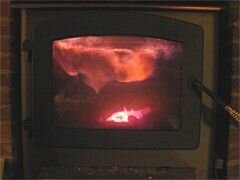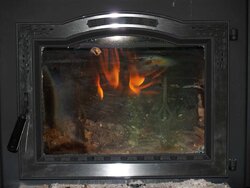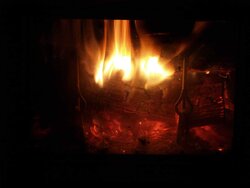Hi All,
I searched through all the existing threads, but can't seem to find answer for secondary burn question so hopefully someone here can help me out. How long on average would you say secondary burn lasts? I have 4 baffles on my insert, when I damper down I will see flames all across the rear baffle, but the 3 closest to the front don't show any flames. This last for 10-20 min. I placed a thermometer on the top of the insert where the fan blows out (Hampton 300) and I do see the temp go up about 150 degrees once I damper it down. Flames dance around the logs, but not at top of stove.
Originally I was thinking my wood wasn't seasoned well enough, but then I tried with BioBricks and experienced the same results. Even dampered all the way down the bios will burn for 3-4 hours, then just glow with no action at top of insert. Perhaps the Bios don't emit enough smoke for secondary burn?
I searched through all the existing threads, but can't seem to find answer for secondary burn question so hopefully someone here can help me out. How long on average would you say secondary burn lasts? I have 4 baffles on my insert, when I damper down I will see flames all across the rear baffle, but the 3 closest to the front don't show any flames. This last for 10-20 min. I placed a thermometer on the top of the insert where the fan blows out (Hampton 300) and I do see the temp go up about 150 degrees once I damper it down. Flames dance around the logs, but not at top of stove.
Originally I was thinking my wood wasn't seasoned well enough, but then I tried with BioBricks and experienced the same results. Even dampered all the way down the bios will burn for 3-4 hours, then just glow with no action at top of insert. Perhaps the Bios don't emit enough smoke for secondary burn?





